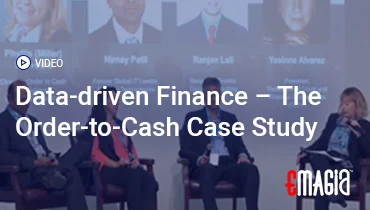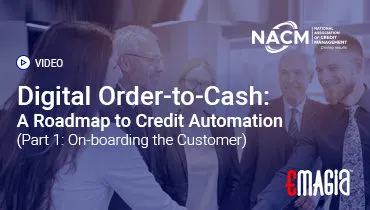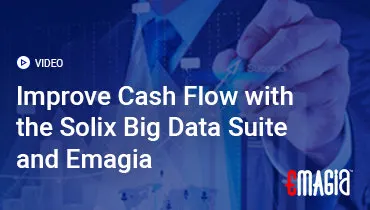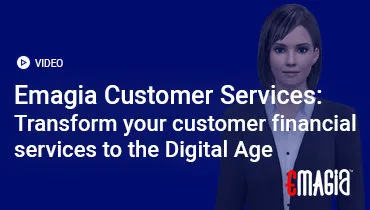Welcome to the ultimate guide on invoice capture software, a critical technology for modern finance teams looking to streamline and revolutionize their accounts payable (AP) processes. For decades, invoice management has been a labor-intensive, error-prone manual task. Financial professionals have grappled with stacks of paper, inconsistent digital formats, and the tedious, repetitive work of data entry.
This comprehensive article will explore the full spectrum of automated invoice capture, from its foundational technologies like OCR and AI to its undeniable impact on business efficiency, accuracy, and profitability. We will delve into how these systems go beyond simple invoice scanning services to create a truly intelligent, touchless workflow that drives strategic value for your organization.
By the end of this guide, you will have a complete understanding of what makes a world-class invoice capture solution, how to implement one successfully, and the tangible benefits your business can expect. Let’s begin our journey into the future of accounts payable.
What is Invoice Capture Software? A Comprehensive Definition
At its core, invoice capture is the process of automatically extracting essential information from an invoice, regardless of its format. Invoice capture software uses a combination of advanced technologies to read and interpret data from a wide variety of sources, including paper, PDFs, email attachments, and electronic data interchange (EDI) files. It then converts this unstructured data into a structured format that can be easily validated and integrated into a company’s financial systems.
Think of it as the brain behind a paperless accounts payable department. Instead of an employee manually typing data from a scanned PDF into an ERP system, the software performs this task in a matter of seconds, with significantly higher accuracy. It’s the foundational first step in a fully automated invoice processing workflow.
The Critical Role of Automated Invoice Data Capture
The transition from manual to automated processes is a fundamental shift for accounts payable. Traditional methods of invoice data capture rely on human intervention at every stage, from receiving and sorting invoices to data entry and validation. This is not only time-consuming but also a major source of costly errors.
An automated invoice data capture system changes the entire dynamic. It allows businesses to receive invoices, extract the critical data (such as vendor name, invoice number, date, line items, and total amount), and prepare it for further processing—all without a single manual keystroke. This frees up the finance team to focus on higher-value activities like strategic analysis, exception handling, and forging stronger relationships with suppliers.
Moving Beyond Simple Invoice Scanning Services
The term “invoice scanning services” often brings to mind a basic OCR tool that simply converts an image of an invoice into text. While this was a key first step in automation, modern solutions have evolved far beyond this. Today’s accounts payable scanning solutions are powered by artificial intelligence and machine learning, enabling them to understand the context of the data they are extracting.
This means they can handle a vast array of invoice layouts, languages, and currencies without needing rigid, pre-defined templates. They learn and improve with every invoice they process, making them more accurate and efficient over time. This is a crucial distinction between outdated systems and the cutting-edge solutions available today.
The Core Technologies Powering Intelligent Invoice Capture
The magic behind modern invoice capture software is a powerful fusion of several key technologies. These components work together to provide a level of automation and accuracy that was previously unimaginable.
Optical Character Recognition (OCR) for Invoices: The Foundation
OCR is the base technology that makes everything else possible. It’s a technology that converts different types of documents, like scanned paper documents, PDFs, or images, into editable and searchable data. In the context of finance, OCR invoice scanning software identifies text and numbers on an invoice and converts them into machine-readable data. While early OCR technology was often rigid and prone to errors, today’s intelligent OCR engines are far more robust and accurate.
This technology is an essential part of any invoice automation system, as it’s the bridge between a physical or image-based invoice and a digital, structured data format. Without it, the vast majority of paper-based invoices would still require manual data entry.
Artificial Intelligence (AI) and Machine Learning (ML) in Invoice Processing
This is where things get truly intelligent. While OCR can read text, AI and machine learning are what allow the software to understand it. AI models are trained on billions of invoices, enabling them to recognize patterns, adapt to new layouts, and predict where to find specific data fields without a template. This is the difference between simple character recognition and true AI invoice processing.
The AI and ML algorithms can:
- Learn from corrections: If a user manually corrects a data field, the AI learns from that correction and applies it to similar future invoices.
- Handle variations: They can process invoices from a new vendor with a unique format without any pre-configuration.
- Extract complex line items: This is a critical feature, as many invoices have detailed tables with multiple products, quantities, and prices. AI-powered systems can handle this with high precision.
Intelligent Document Processing (IDP): The Holistic Approach
Intelligent Document Processing is the combination of OCR, AI, and ML to create a complete, end-to-end solution. An IDP platform is not just about data extraction; it’s about the entire workflow. It can classify documents, validate data against business rules and external data sources (like vendor master files), and initiate the next steps in the process, such as routing the invoice for approval.
IDP solutions are the pinnacle of invoice data extraction software because they handle the full document lifecycle, from initial intake to final archival. They offer a holistic, automated approach to managing all of your accounts payable documents.
The Unmistakable Benefits of Automated Invoice Capture
Implementing a modern invoice capture software delivers a wide range of benefits that go far beyond just saving time. It fundamentally transforms the accounts payable function into a strategic asset for the business.
Increased Efficiency and Speed in the AP Process
The most immediate and obvious benefit is the dramatic increase in speed and efficiency. By eliminating manual data entry, invoices can be processed in a fraction of the time. This not only reduces the backlog of invoices but also accelerates the entire payment cycle.
Faster processing times mean your company can take advantage of early payment discounts from vendors, leading to significant cost savings. It also ensures that payments are made on time, which improves vendor relationships and prevents costly late fees.
Eliminating Human Error with Automated Invoice Scanning
Manual data entry is inherently prone to error. A single typo can lead to a delayed payment, a duplicate payment, or a difficult reconciliation process. Automated accounts payable scanning solutions minimize this risk to almost zero.
The software’s high-precision OCR and AI validation layers ensure that the data captured is accurate and consistent. This leads to cleaner data, more reliable financial reports, and a significant reduction in the time spent on correcting mistakes. The reduction in errors is one of the most powerful justifications for the investment.
Cost Savings and Rapid ROI with Best Invoice Capture Software
The costs associated with manual invoice processing are often underestimated. They include labor costs for data entry, the costs of rectifying errors, and the potential for late fees or missed discounts. The best invoice capture software provides a rapid return on investment (ROI) by addressing all of these factors.
By automating the process, businesses can handle a greater volume of invoices with the same team size, or even a smaller one. This frees up valuable human capital to be reallocated to more strategic tasks, directly impacting the bottom line.
Enhanced Financial Visibility and Control for Informed Decision-Making
Manual processes often result in a lack of visibility into the status of an invoice. It’s difficult to know exactly where an invoice is in the approval workflow, how long it has been there, or who is responsible for it. Automated systems provide real-time dashboards and reporting, giving finance leaders a clear, birds-eye view of the entire AP process.
This enhanced visibility enables better cash flow management and more accurate financial forecasting. It also makes it easier to track and audit expenses, ensuring every dollar is accounted for.
Boosting Compliance and Security in Accounts Payable Scanning
With increasing regulatory scrutiny, maintaining a robust audit trail is more important than ever. An automated accounts payable scanning solution provides a complete, digital record of every invoice, including its entire lifecycle from capture to payment. This ensures that your business remains compliant with financial regulations and is always ready for an audit.
Furthermore, these systems enhance security by reducing the risk of fraud. The software can flag duplicate invoices and detect anomalies in invoice data, alerting the team to potential fraudulent activity before any payment is made.
Key Features of Leading Invoice Capture Platforms
When evaluating a potential solution, it’s crucial to look for a platform that includes a set of advanced features designed to maximize automation and efficiency. Here are some of the most important capabilities to consider in the best invoice capture software.
AI-Powered, Template-Free Data Extraction
Gone are the days of rigid, template-based systems that require manual configuration for every new vendor. The most effective invoice data extraction software today uses AI to automatically adapt to any invoice format. This “template-free” approach ensures that the software can instantly process invoices from new suppliers with a high degree of accuracy, saving countless hours of setup time.
Advanced Line-Item OCR for Detailed Capture
Beyond capturing basic header-level data like the invoice number and total amount, a superior solution can accurately extract detailed line-item information. This includes descriptions, quantities, unit prices, and tax rates. This level of detail is critical for accurate reporting, inventory management, and purchase order matching.
Seamless Integration with ERPs and Financial Systems
An invoice capture solution is only as good as its ability to integrate with your existing technology stack. Look for solutions that offer seamless, out-of-the-box integrations with major ERP systems like SAP, Oracle, and Microsoft Dynamics, as well as accounting platforms like QuickBooks and Xero. This ensures that captured invoice data flows directly into your financial systems, eliminating data silos and the need for any manual re-entry.
Automated 2-Way and 3-Way Matching
One of the most time-consuming steps in the AP process is verifying that an invoice matches its corresponding purchase order (PO) and/or goods receipt. The best invoice capture software automates this process entirely. It can perform 2-way matching (invoice vs. PO) or 3-way matching (invoice vs. PO vs. receipt) automatically, flagging any discrepancies for human review. This drastically speeds up the approval process and ensures financial accuracy.
Customizable Approval Workflows and Invoice Coding Software
No two businesses have the exact same approval process. A flexible solution should allow you to create customizable approval workflows based on specific business rules, such as invoice amount, vendor, or department. Additionally, the software should include invoice coding software features that can automatically code general ledger (GL) accounts, further reducing manual effort and ensuring consistency.
Implementing an Automated Invoice System: A Strategic Approach
A successful implementation of a new system requires careful planning and execution. It’s not just about installing software; it’s about transforming a business process. Here’s a step-by-step guide to help you on your journey to a fully automated system.
A Step-by-Step Guide to Digital Invoice Processing
- Assess Your Current Workflow: Before you can automate, you must first understand your current manual process. Map out every step, from how invoices are received to how they are ultimately paid. Identify all the bottlenecks, pain points, and areas where errors are most likely to occur.
- Define Your Goals and Requirements: What do you hope to achieve with a new system? Do you want to reduce processing time, cut costs, improve visibility, or all of the above? Create a checklist of essential features and integration requirements based on your specific needs.
- Evaluate Potential Solutions: With your list of requirements in hand, begin researching potential digital invoice processing solutions. Look for platforms that offer the features you need, have a strong track record, and provide excellent customer support.
- Plan the Implementation and Integration: Once you’ve selected a solution, work closely with the provider to plan the implementation. This includes integrating the software with your ERP, training your team, and setting up your initial workflows and business rules.
- Measure and Optimize: After the system is live, continuously monitor key performance indicators (KPIs) like invoice processing time, exception rates, and cost per invoice. Use this data to fine-tune your workflows and ensure you are getting the most value out of your investment.
Choosing the Right Accounts Payable Scanning Solutions for Your Business
The right solution for a small business with 100 invoices a month will be different from a multinational corporation with tens of thousands. When making your choice, consider these factors:
- Scalability: Can the solution handle your projected growth in invoice volume?
- Integration: Will it work seamlessly with your existing ERP and other financial systems?
- AI Capabilities: How robust are its AI and machine learning features for template-free processing and continuous learning?
- Pricing Model: Is the pricing based on the number of invoices processed, the number of users, or a subscription?
Beyond Automation: How Emagia Transforms the Invoice-to-Cash Lifecycle
While many solutions focus on the singular task of invoice capture, a truly transformative platform takes a more holistic view of the entire finance and accounts receivable (AR) process. Emagia is a leader in this space, offering a comprehensive, AI-powered platform that manages the entire order-to-cash (O2C) lifecycle. Its solutions go far beyond simple capture, providing strategic value that drives improved cash flow and operational excellence.
Emagia’s GiaDocs AI, for example, is a powerful AI engine designed to intelligently capture and extract data from various financial documents, including invoices, purchase orders, and remittance advice. It provides a level of accuracy and speed that is essential for a high-volume AP department. By using Emagia’s platform, companies can not only automate their invoice capture but also streamline the downstream processes of invoice approval and payment.
The platform’s integrated GiaGPT, an AI assistant, and a customer self-service portal empower finance teams and their customers alike. It helps to accelerate payments by providing customers with a transparent and easy way to view and pay invoices, reducing payment delays and invoice-related disputes. This end-to-end approach, from intelligent invoice capture at the start of the process to automated collections and cash application, ensures that finance teams spend less time on manual, transactional tasks and more time on strategic priorities.
By leveraging Emagia’s solutions, businesses can achieve measurable results, including a significant reduction in Days Sales Outstanding (DSO), a major improvement in invoicing accuracy, and a boost in on-time payments. Emagia’s focus on the entire O2C cycle makes it a unique and powerful partner for any organization looking to modernize its finance operations.
Frequently Asked Questions About Invoice Capture Software
What is the difference between OCR and invoice capture software?
While OCR is a core technology used by invoice capture software to read and recognize text from documents, invoice capture software is a broader solution. It combines OCR with artificial intelligence, machine learning, and workflow automation to not only read the data but also understand its context, validate its accuracy, and integrate it into a business’s financial systems.
How does AI improve invoice data capture?
AI improves data capture by enabling “template-free” processing. Unlike older systems that require pre-configured templates for each vendor’s invoice, AI-powered solutions can learn to recognize and extract data from any invoice layout, even new ones, with a high degree of accuracy. This self-learning capability drastically reduces setup time and manual intervention.
Is invoice capture software secure?
Yes, leading invoice capture solutions are designed with robust security in mind. They are often cloud-based and use advanced encryption, firewalls, and compliance certifications (like SOC 2 and GDPR) to ensure that sensitive financial data is protected from unauthorized access. They also help to prevent fraud by automatically detecting and flagging duplicate invoices.
What is the typical ROI of implementing invoice capture software?
The ROI can be significant and is often realized in a short amount of time. It comes from a combination of reduced labor costs for manual data entry, the elimination of costly errors, a decrease in late payment fees, and the ability to capture more early payment discounts. Businesses often see a return on their investment within the first year.
Can invoice capture software integrate with my existing ERP system?
Yes, a key feature of the best invoice capture platforms is their ability to integrate seamlessly with major ERP and accounting systems. These integrations allow for the automated flow of data from the captured invoice directly into your financial system, eliminating data silos and manual data re-entry.
Conclusion: The Future of Accounts Payable is Automated
The days of manual invoice processing are quickly becoming a thing of the past. As businesses seek to increase efficiency, reduce costs, and gain a strategic advantage, the adoption of intelligent invoice capture software is no longer a luxury—it’s a necessity. From the foundational power of OCR to the transformative intelligence of AI and machine learning, these platforms are revolutionizing the accounts payable function.
By embracing these technologies, companies can move beyond a reactive, transactional approach to AP and create a proactive, strategic financial operation. The benefits of improved accuracy, faster processing times, and enhanced financial visibility are undeniable. The future of accounts payable is touchless, intelligent, and, most importantly, automated.



